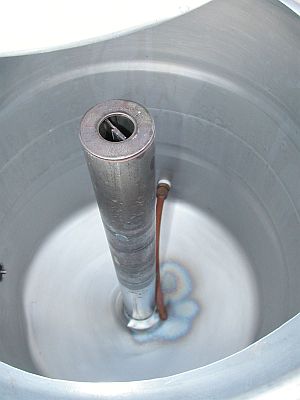On my Blichmann burners the flames are lower/smaller but I get much better heat delivery from them to the mash tun keg. I'm actually putting together a keggle (in the process of polishing it) that will be used for my next batch. With four holes before the lower weld, I don't think there will be any issue with gas venting.
IF you do put additional holes in the skirt, you could see a reduction in how efficient the heating of the keggle is. In the new keggle I'm making, it has four holes already in the skirt (placed there by the manufacturer) which I'm leaving alone. Actually, I might see about getting one welded closed since it's really close to the ball valve (in line with one handle opening). IF I do that, I might place a hole in that same area, where it's safe. I just don't want the heat to come through the hole and either scorch the wort in the ball valve, or otherwise F up the hardware going in. An alternate would be to get a small half round (cut stainless tube) welded there to shield the hardware.









